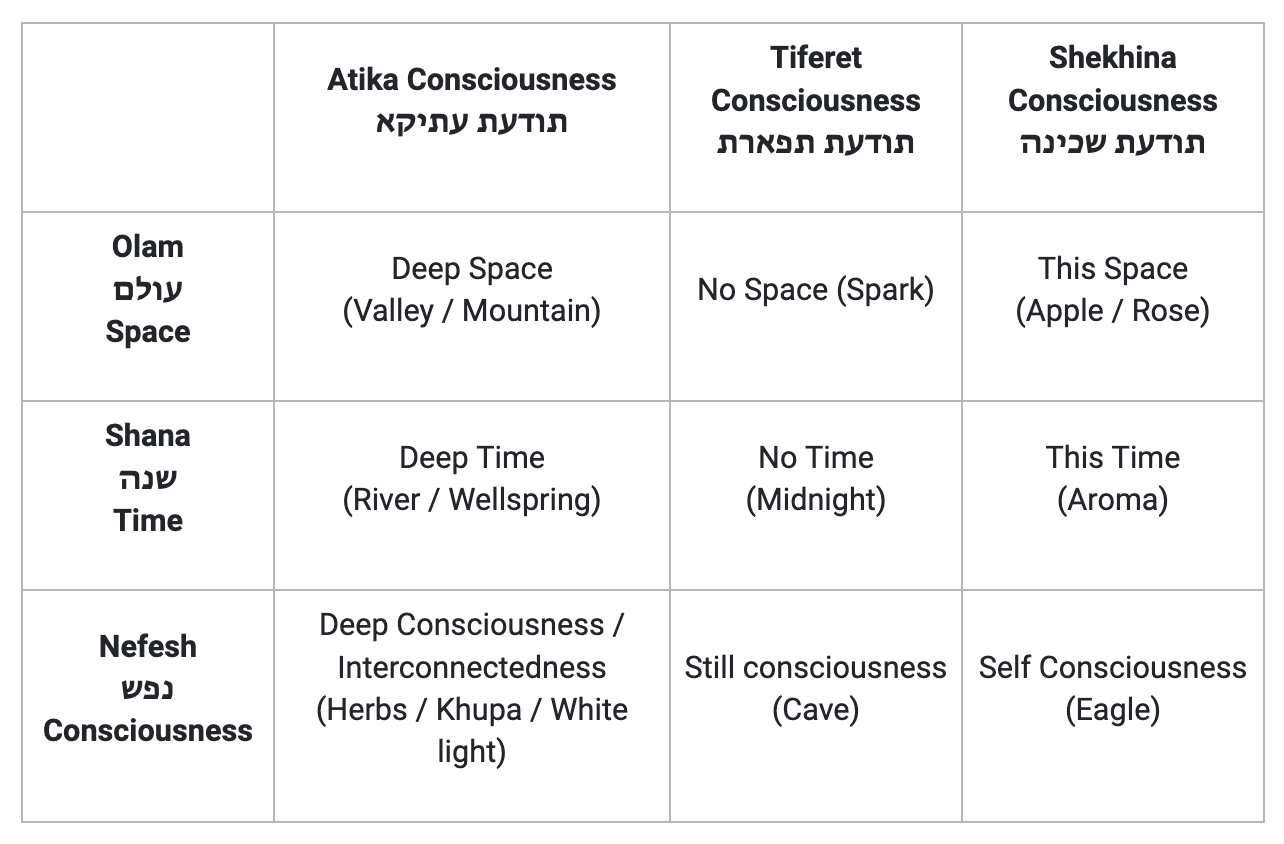Nine Consciousnesses of Smoke & Radiance
Refracting Motifs in Sefer Yetzirah with the Zohar as Meditation Objects
The book of Zohar, Radiance in Hebrew, recounts the mystical escapades of Rabbi Shimon Bar Yochai (Rashb”i) and his students in a dream-realm. It is filled with symbolism and allegories that fluidly shift, hinting at a reality that is porous, decentralized, fluid, sensory and mythic. Artifacts flow from the Apple to the Aroma, from the Cave to the Eagle, from the River to the Spark. Rashb”i himself, as the sense of agency of the unifying sense of self, enters each consciousness as a realm, through the apple, the rose, the aroma. In the brilliant book A River Flows from Eden: The Language of Mystical Experience in the Zohar, by Melila Hellner-Eshed, Ph.D., (Hebrew, Alma and Am Oved Publications, 2005 and English, Stanford University Press, 2009), in describes “Three Main States of Mystical Consciousness,” (pg 340-351): Attika Consciousness (ancient, mythic, prior to all;), Malkhut/Rose Consciousness, (Sensory, devotional-dualistic, yearning for union, feminine, disordered;) Tiferet Consciousness (unified consciousness, atemporal, stability, order, masculine, witnessing.)
Sefer Yetzirah, an incantation and alchemy book whose author is unknown and may date back to 3rd century CE , offers a vast example of refractions - multiplying different lists, matrices and mind-maps, those of space and time and body, celestial bodies, the seasons, elemental stones, the 22-letter Hebrew alphabet itself - hinting at the infinite intra-relativity of the cosmos, and instructing how to conjure-realign these components of reality. One matrix it offers is of Asha”n - a matrix of the universe through the lenses of space (A for Olam / world), time (Sh for Shana / time / change / recurrance) and Sense of Self (N for Nefesh / psyche / soul.) In Hebrew, the accronym Asha”n means smoke .
The three consciousnesses of the Zohar, refracted in the three aspects of Asha”n make a fascinating matrix. The Zohar’s fluid narratives and visions invite an awareness that can both encompass all these states of mind in one thought, as well as move freely between them. Together, the nine different objects of meditation describe the world, time and consciousness, each through deep experience, no experience, and this local experience.
To help practice this, I paired each kind of the nine consciousnesses (3 times 3) with an item from the Zohar, written in the brackets, for easy coding and possibly as meditation objects.
Each of the nine consciousnesses can be paired with one of the nine lower sefirot, leaving keter as the one unified “…spark of impenetrable darkness flashed within the concealed of the concealed, from the head of infinity- a cluster of vapor forming in formlessness, thrust in a ring, not white, not black, not red, not green, no color at all. (Zohar 1:15a; translation by Daniel Matt 2004-2007, vol. I, pp.107-8)”
One way I practice these is during the She’mah invocation in my morning shacharit davening. I chant “Shemah Israel Adonai Eloheynu Adonai Echad,” and contemplate deep space. I pause, contemplating no space, then repeat, contemplating deep time, and then pause, contemplating no time, then again, chanting again contemplating, deep interconnectedness. I pause for stillness. I then chant the quiet refrain “Baruch shem kvod malkhutu l’olam va’ed,” contemplating this space, again for this time, and lastly, for this self-consciousness.
This is just one way to use the Shema and the nine consciousness. Another could be to divide the Shema line itself to three component “Shema Israel,” “Adonai Eloheinu,” & “Adonai Echad,” and assign an object for each one. Perhaps doing the Barkukh shem as the ten unifying keter-ayin.
Photo by the author, Hedera shore, Israel 2021

